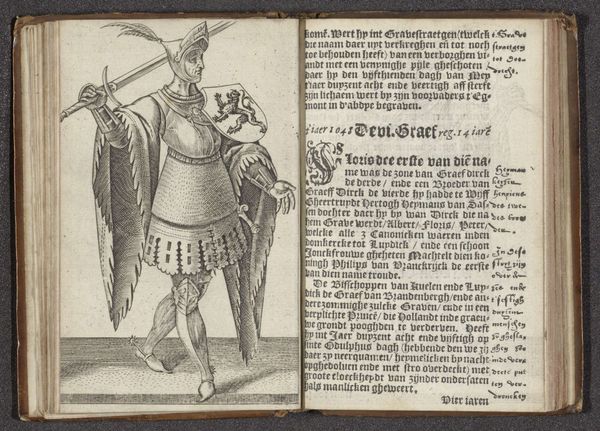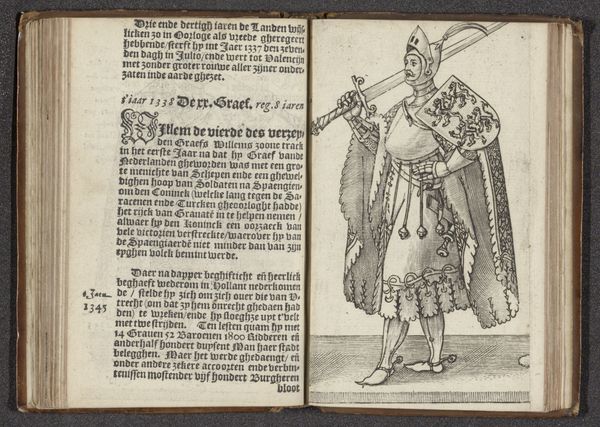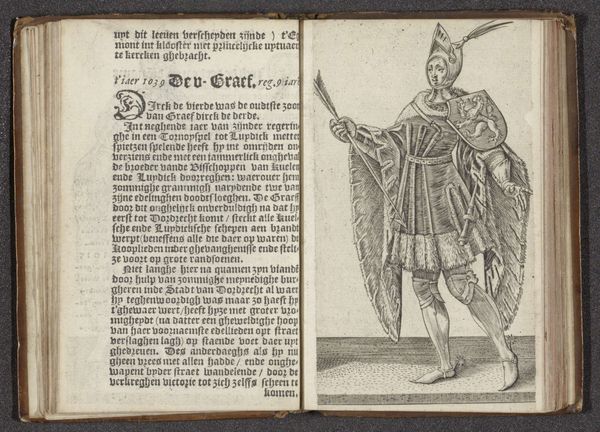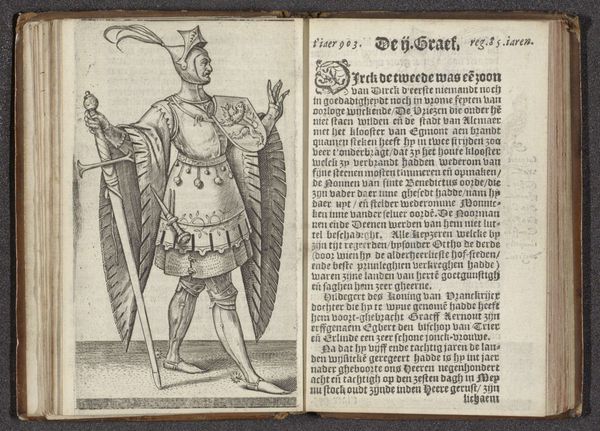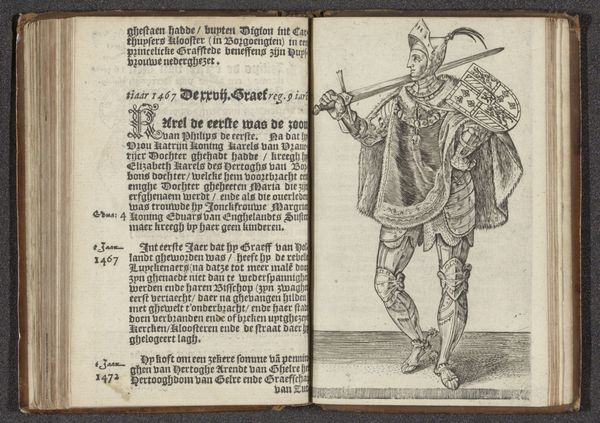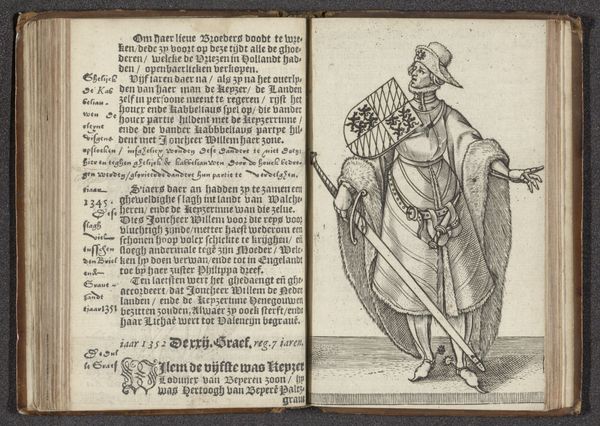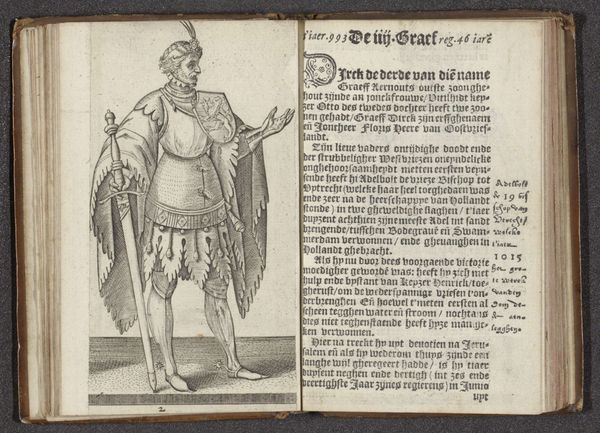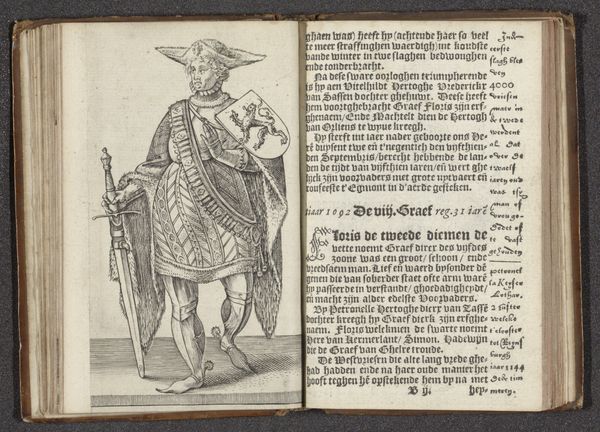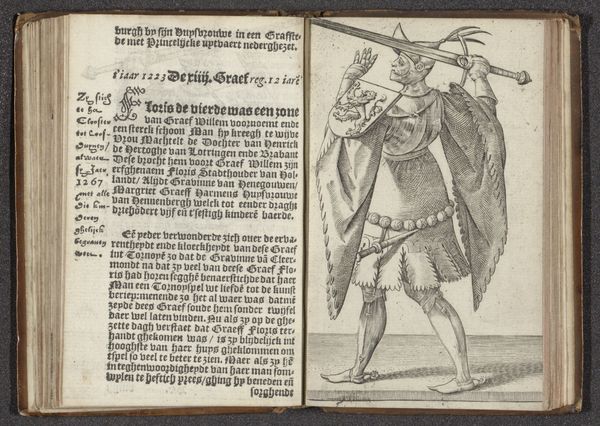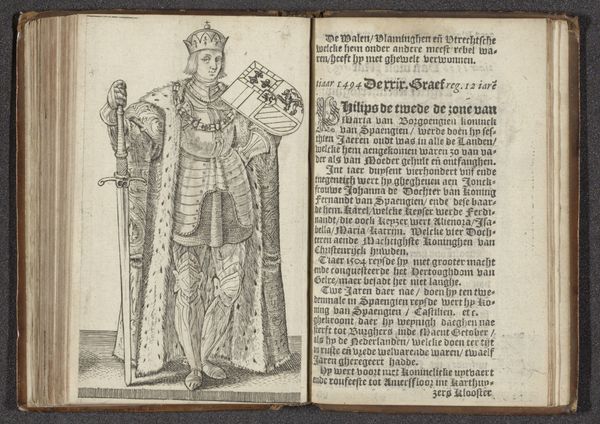
print, engraving
#
portrait
# print
#
11_renaissance
#
history-painting
#
northern-renaissance
#
engraving
Dimensions: height 135 mm, width 87 mm
Copyright: Rijks Museum: Open Domain
This engraving of Graaf Aarnout van Holland was made by Hendrick Goltzius in the late 16th century. The Count stands in full armor, a sword held confidently, a symbol of authority and readiness for battle. Look at the lion emblazoned on his shield. This is a motif that traces back to ancient heraldry, representing courage and nobility. We see it echoed in countless royal crests across Europe. The lion, however, has not always signified valor. In earlier Mesopotamian art, it was a symbol of raw, untamed power, a force of nature to be feared. Over centuries, this primal image evolved, becoming associated with leadership and strength. The attire and the lion carry with them a sense of inherited identity, a connection to ancestors. It evokes a psychological link to the past, where the wearers of such armor and symbols acted as protectors. The image taps into our collective memory, stirring deep-seated emotions of security and pride. This symbol resurfaces, evolves, and takes on new meanings in different contexts.
Comments
No comments
Be the first to comment and join the conversation on the ultimate creative platform.
